bur oak (Quercus macrocarpa)
Fagaceae, the beech family
How to recognize bur oak. All our oaks save one (shingle oak, which has cherry-like leaves) have lobed leaves that are alternately arranged. The upper internodes are very short though, making the leaves appear clustered towards the branch tips. There are two broad categories of oaks: (1) the white oak group which has blunt lobes that do not end in bristle tips, and (2) the red oak group which has bristle-tipped lobes. Bur oak is a member of the white oak group.
Bur oak leaves are distinctively shaped: broadest above the middle, with margins that are lobed deeply in the lower half of the leaf, but shallowly in the upper half.
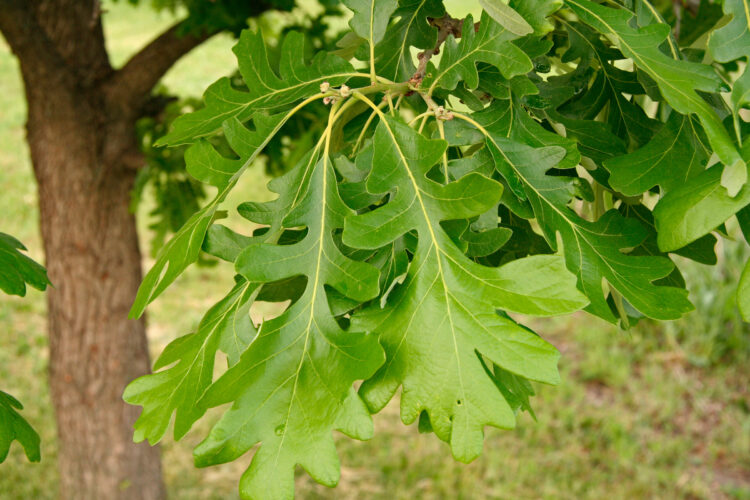
Bor oak leaves are broader and more shallowly lobed at the tips.
True to its name–the specific epithet means “large fruited”–bur oak bears pretty mondo acorns, both in size and number, both in size and number. Moreover, the acorn caps are deep and heavily fringed.
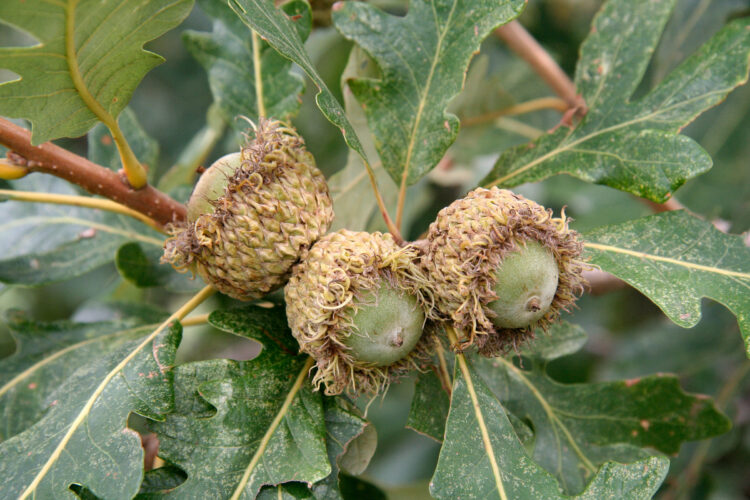
Bur oak acorns, seen Sept 10, 2009 in Marion County, Ohio.
Flowers and fruits. Like many forest trees, oaks are monoecious (i.e., bearing unisexual flowers, but with both sexes found on the same tree) and wind-pollinated. Lacking petals, the male flowers are in drooping catkins. The females, while slightly larger are much fewer in number, produced in spikes of just 1-several in the axils of developing leaves in springtime. The photo below shows a flowering branch with very abundant and conspicuous male catkins. One female flower is barely discernable at the top.
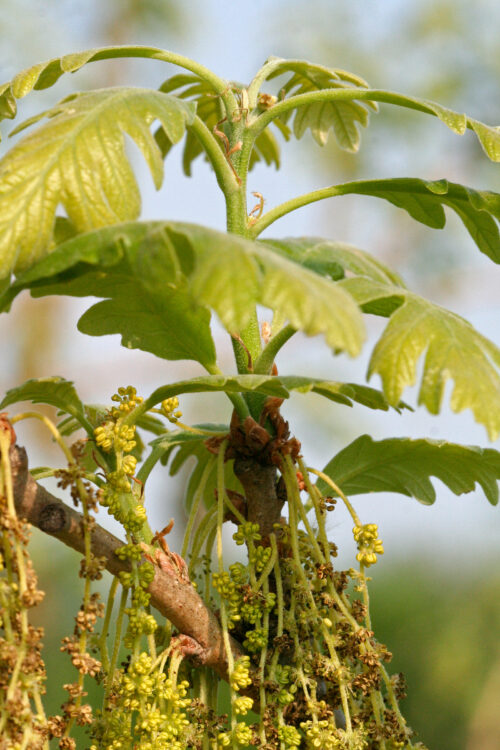
A bur oak branch in early May, showing male catkins and a female flower.
Below, have a closer view of a female flower.
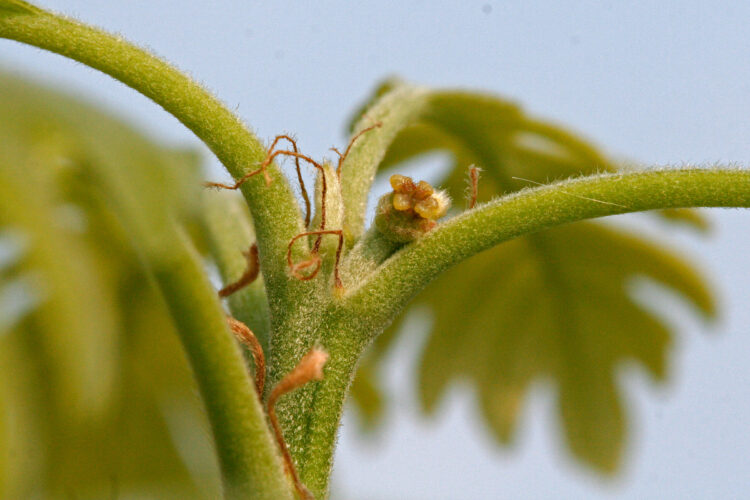
Bur oak female flower, May 10, 2007 in Marion County Ohio.
The fruit is an acorn, a thin-shelled single-seeded nut with a cap consisting of a tight spiral of scales. Here’s a bunch on the ground in early October, available for animals to eat. Acrons are terrific wildlife food. So are acorns.
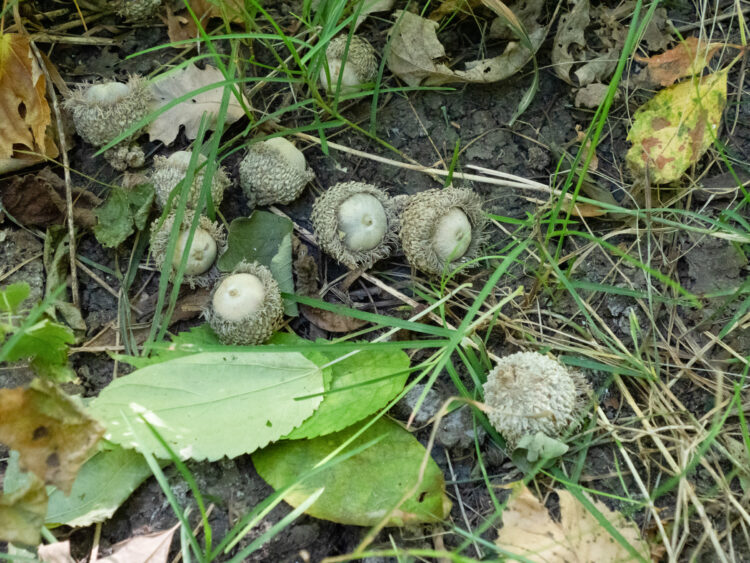
Bur oak acorns on the ground in Miami County Ohio on October 10, 2023.
Bark. Bur oak bark is thick and dark, arrayed in long tough ridges.
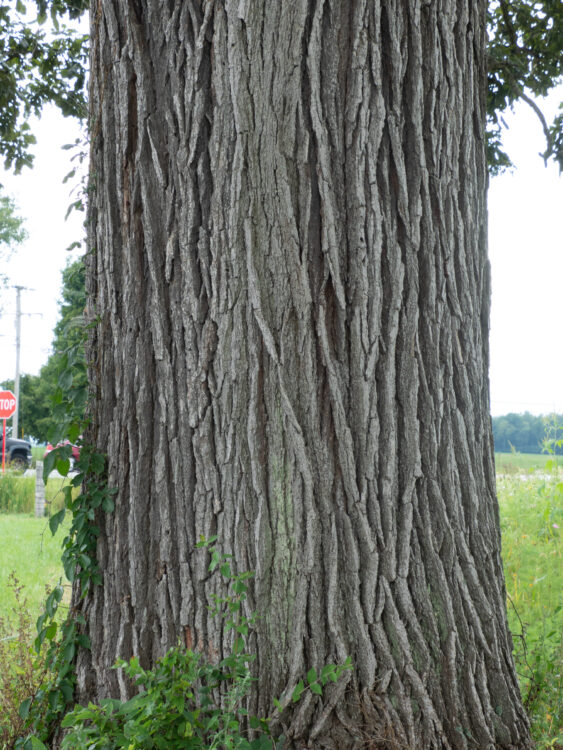
The trunk of a large open-grown bur oak showing characteristic dark ridges.
Oak trees, especially those in the white oak group, have a wide sillhouette. Here’s a photo of the same open-grown one shown above, in the process of being cropped tightly in Adobe Lightroom, so we can see its exact proportions. It’s wider than it is tall!
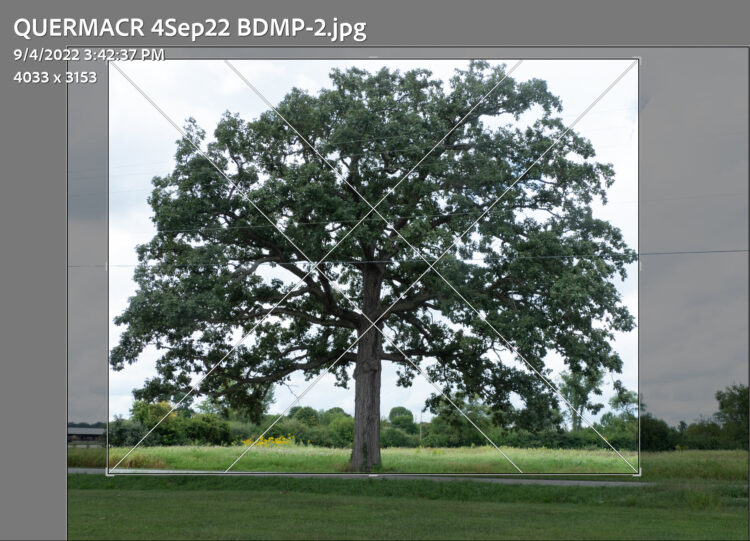
Four-thousand thirty-three pixels wide; three thousand one hundred fifty three pixels tall.
In the winter. Oaks have clustered end buds. Some members of the white oak group, including bur oak, are blunt, not sharp-pointed (similar to their leaves).
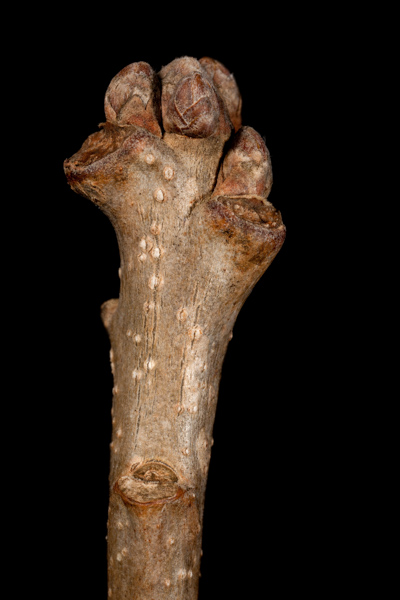
bur oak twig
Where to find bur oak. E. Lucy Braun, in The Woody Plants of Ohio (1961, 1989; The Ohio State University Press) tell us that this species is “A large tree ranging from the Appalachian Mountains westward and northwestward to central Texas, eastern Montana, and Saskatchewan; rare and local eastward and southeastward of this area. In Ohio, most frequent west of the Allegheny Plateau; originally an important constituent of the Great Black Swamp are of northwestern Ohio, as well as of the oak-hickory area of west-central Ohio. Bur oak occupies a variety of habitats ranging from wet to dry; often found on high-level alluvial bottoms of small streams. ”
Scanned Drawing from an Old Book
Flora of West Virginia, by P.D. Strausbaugh and E.L. Core
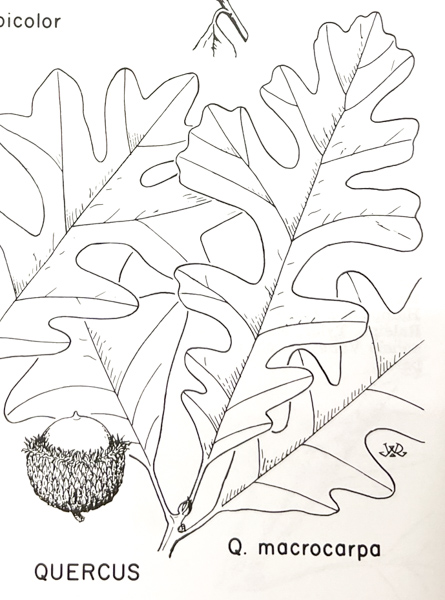
Ooh, ooh! I have a question!
Where’s the best place to see bur oaks in Ohio, in a rare and unique ecosystem type, named and defined?
An “oak savannah” is an open grassland with scatterered trees. Daughmer Prairie Savannah State Nature Preserve in north-central Ohio’s Crawford County, with towering majestic bur oaks that are over 200 years old is one of the best remaining oak savannahs in the United States.
(Note: bur oak trees have been planted at the Larry R. Yoder Prairie Learning Lab at The Ohio State University at Marion.)
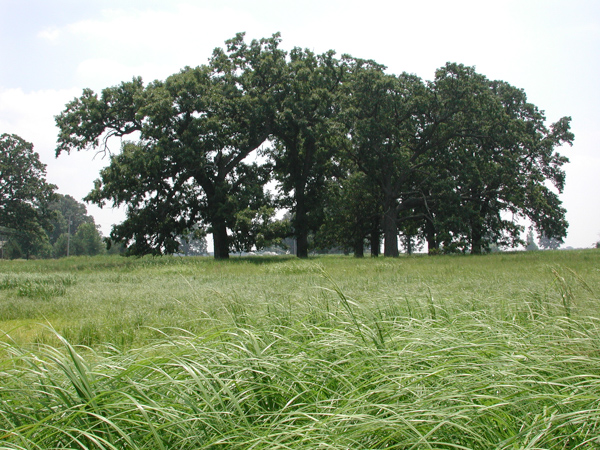
DAUGHMER PRAIRIE SAVANNAH STATE NATURE PRESERVE

